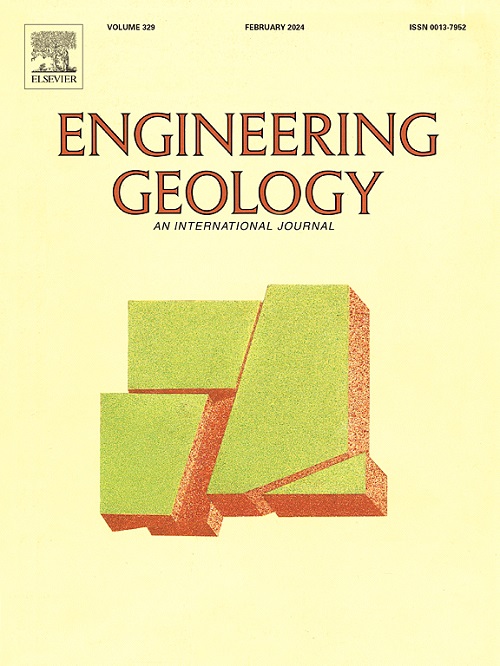Hypermobility of a Catastrophic Earthquake-Induced Loess Landslide
IF 6.9
1区 工程技术
Q1 ENGINEERING, GEOLOGICAL
引用次数: 0
Abstract
Landslide mobility refers to how far and fast a landslide can move downslope. It controls landslide impact areas and damage power. Highly mobile landslides are often initiated on slopes steeper than 30°. However, on 18 December 2023, an earthquake-induced landslide (35°52′54″N, 102°51′10″E) exhibited extraordinary mobility, with an overall travel angle of 1.5°, breaking an on-land landslide record. The landslide originated on a gentle slope (3.6°), eroded an earth dam along its travel path, and finally destroyed 51 houses and claimed 20 lives. Remote sensing and field surveys were conducted to provide morphological characteristics of the hazard chain. A numerical program, EDDA (Erosion–Deposition Debris Flow Analysis), was employed to reproduce the flow dynamics and investigate the causes of hypermobility. The findings reveal three primary causes of hypermobility: (1) liquefaction of the saturated silty loess stratum due to the combined effects of irrigation activity and seismic loading, (2) the loose and macro-pore structure of loess, and (3) confined topography and icy channel bed. The mechanisms revealed have broad implications for understanding fluidized mass movements on gentle slopes in seismically active regions.
灾难性地震引发的黄土滑坡的超流动性
滑坡流动性是指滑坡向下移动的距离和速度。它控制着滑坡的影响范围和破坏力。高流动性滑坡通常发生在陡于 30° 的斜坡上。然而,在 2023 年 12 月 18 日,由地震引发的山体滑坡(北纬 35°52′54″,东经 102°51′10″)表现出了超常的移动性,整体移动角度达到 1.5°,打破了陆地山体滑坡的记录。滑坡起源于一个缓坡(3.6°),沿途侵蚀了一个土坝,最终摧毁了 51 栋房屋,造成 20 人死亡。通过遥感和实地调查,提供了灾害链的形态特征。研究人员采用了一个名为 EDDA(侵蚀-沉积泥石流分析)的数值程序来重现泥石流的流动动态,并对造成泥石流超流动的原因进行了研究。研究结果揭示了造成高流动性的三个主要原因:(1) 灌溉活动和地震荷载的共同作用导致饱和淤泥质黄土地层液化,(2) 黄土的疏松和大孔隙结构,以及 (3) 局促的地形和冰冷的河床。所揭示的机理对于理解地震活跃地区缓坡上的流化质运动具有广泛的意义。
本文章由计算机程序翻译,如有差异,请以英文原文为准。
求助全文
约1分钟内获得全文
求助全文
来源期刊

Engineering Geology
地学-地球科学综合
CiteScore
13.70
自引率
12.20%
发文量
327
审稿时长
5.6 months
期刊介绍:
Engineering Geology, an international interdisciplinary journal, serves as a bridge between earth sciences and engineering, focusing on geological and geotechnical engineering. It welcomes studies with relevance to engineering, environmental concerns, and safety, catering to engineering geologists with backgrounds in geology or civil/mining engineering. Topics include applied geomorphology, structural geology, geophysics, geochemistry, environmental geology, hydrogeology, land use planning, natural hazards, remote sensing, soil and rock mechanics, and applied geotechnical engineering. The journal provides a platform for research at the intersection of geology and engineering disciplines.
 求助内容:
求助内容: 应助结果提醒方式:
应助结果提醒方式:


